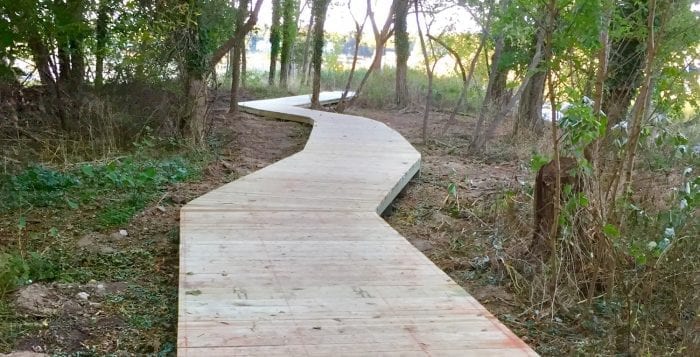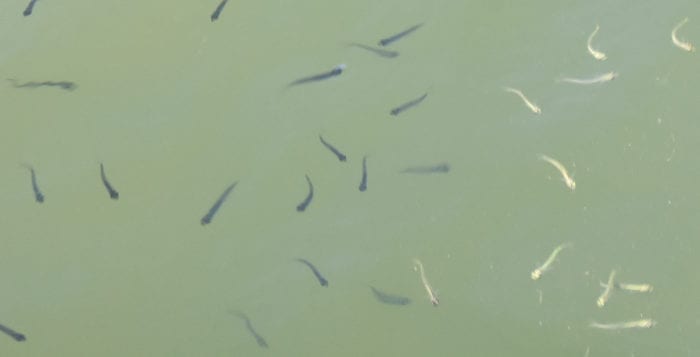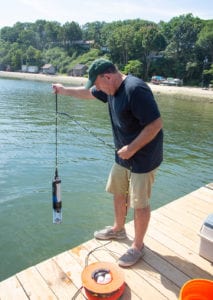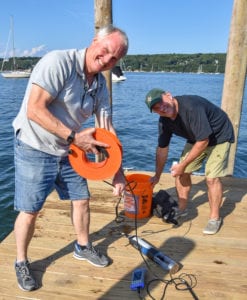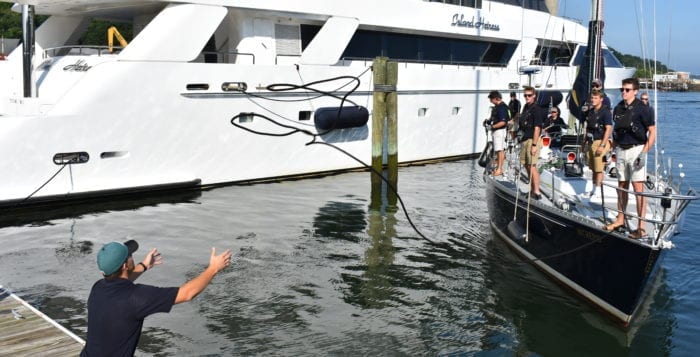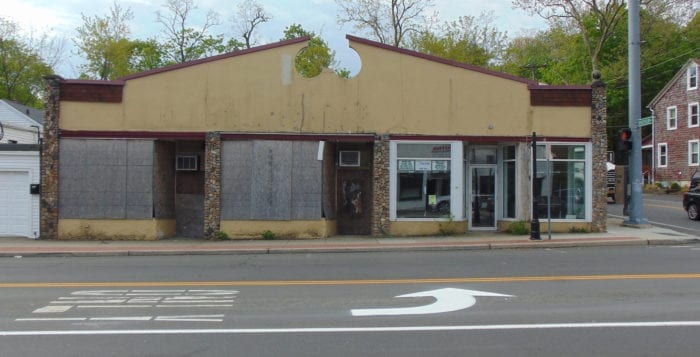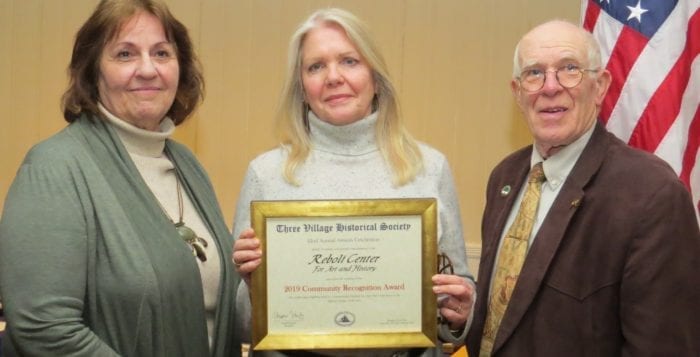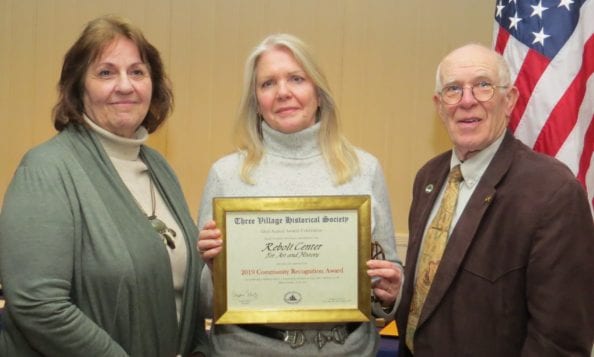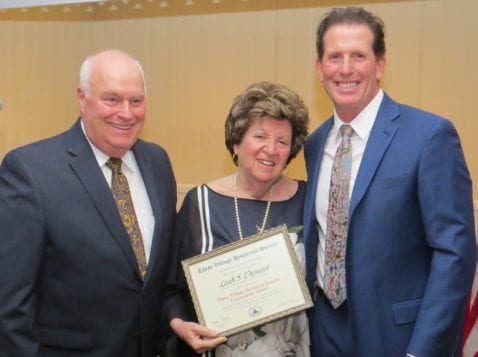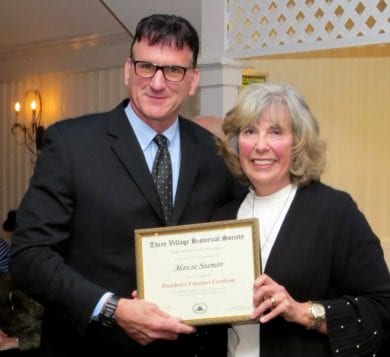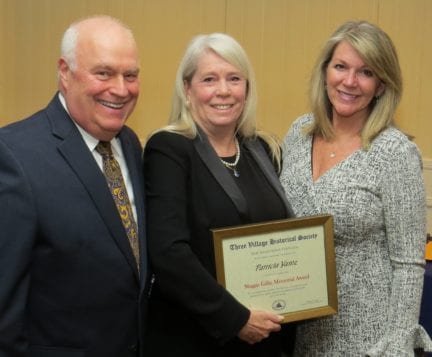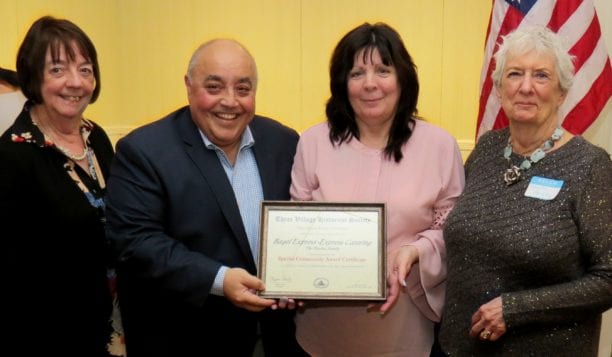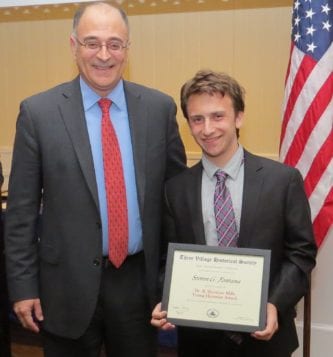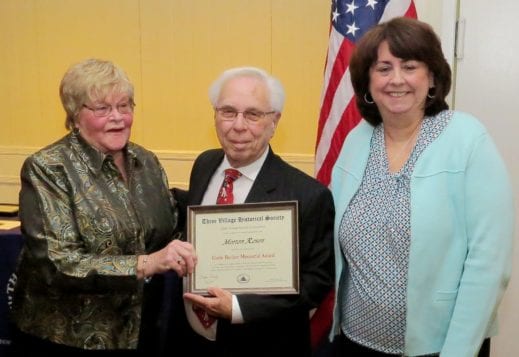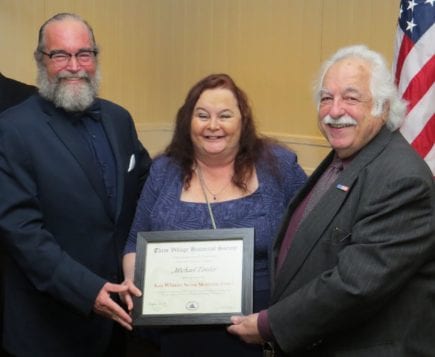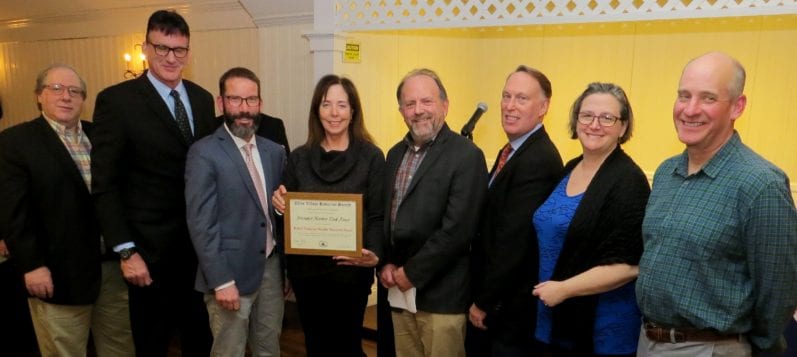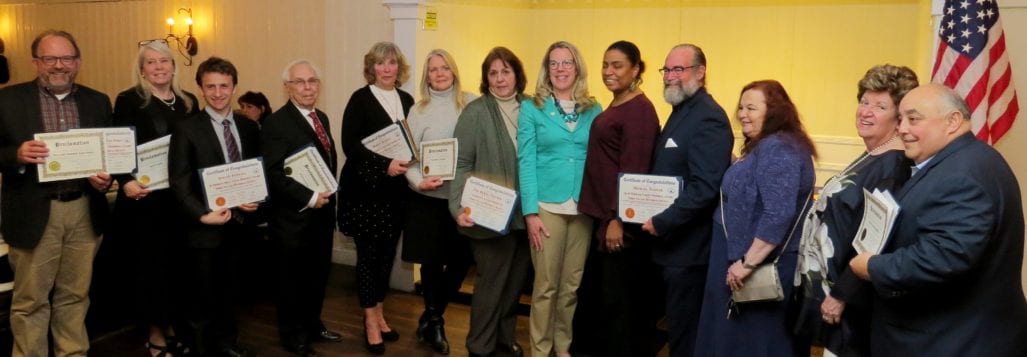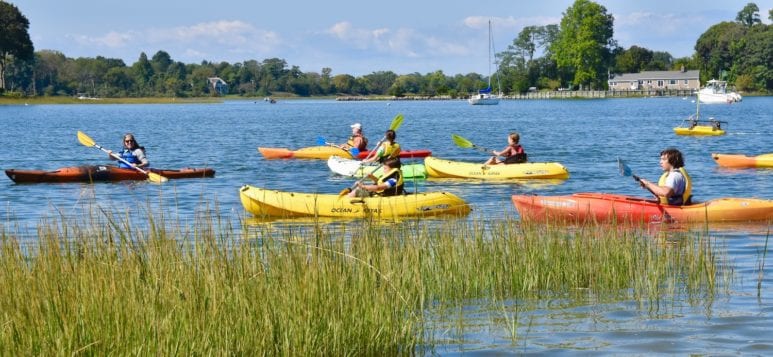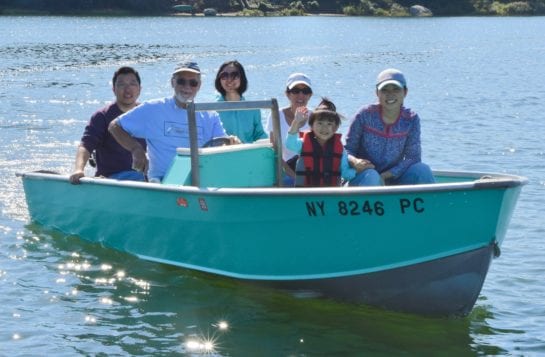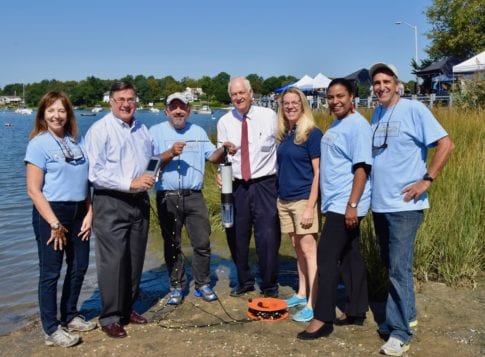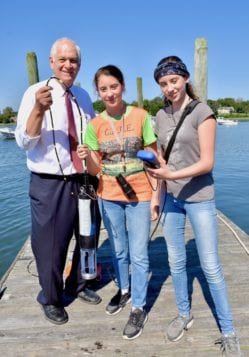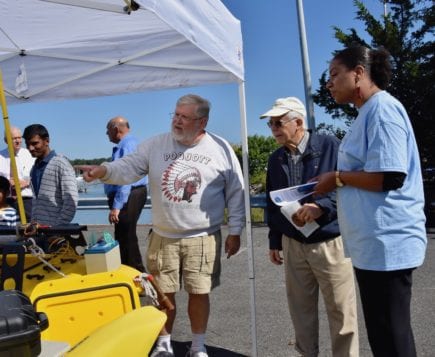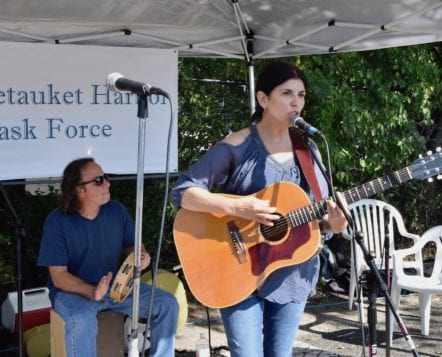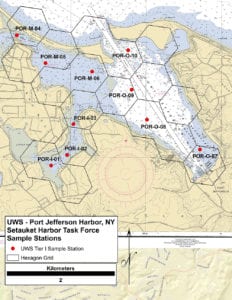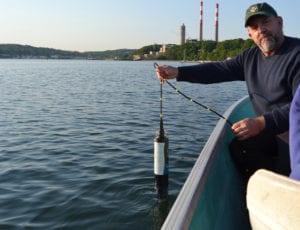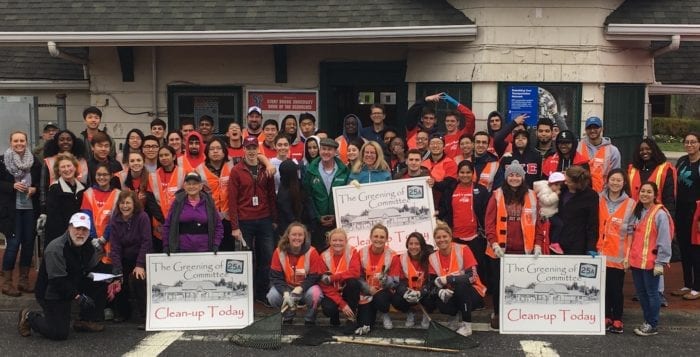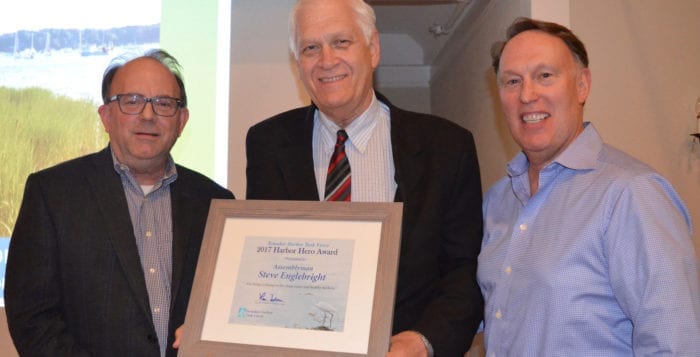Three Village residents have a new way to enjoy and connect with nature.
The Town of Brookhaven recently constructed a 180-foot boardwalk that starts at East Setauket Pond Park, next to Se-Port Delicatessen, and ends with a viewing platform at Setauket Harbor. Laurie Vetere and George Hoffman, co-founders of the Setauket Harbor Task Force, said the boardwalk complements the group’s vision for the site.
“We always had a plan for the park,” Hoffman said. “We really think it’s a unique park that’s been neglected over the years.”
Vetere called the park its pet project.
“We can see the vision of it becoming a beautiful waterfront park right in the heart of downtown Setauket,” she said.
Hoffman and Vetere said the town plans to add benches to the viewing platform and switch out the current light posts to match the historic fixtures along Route 25A. The town is also currently waiting for a permit from the New York State Department of Conservation to cut down the phragmites that are currently slightly blocking the view at the platform.
The task force co-founders said a couple of months ago the town’s Parks & Recreation Department had a surplus of funds for park improvements around town, and Supervisor Ed Romaine (R) and Councilwoman Valerie Cartright (D-Port Jefferson Station) were able to secure $75,000 to be used for the Three Village park.
Vetere, said the Three Village Civic Association, of which she is 2nd vice president, is currently forming a committee to be chaired by Herb Mones and Robert Reuter. She said the hope is to further the vision of the park including aspects such as adding plantings, play equipment for children and possibly moving the gazebo that is currently there to another spot in the park.
“The hope is just to make it more useful and get people invested in Setauket Harbor and the beauty of the harbor,” Vetere said.
Cartright said she was happy with the improvements.
“This is an important place in our community, and we want to increase and promote public access and use of the park,” she said. “We received community feedback about improvements that residents wanted to see at this location. Working off of that community input, I was able to secure $75,000 funding for this project that started about two-and-a-half weeks ago and was completed [Oct. 15].”
In addition to the current work being done by the Town of Brookhaven, in 2016 state Sen. John Flanagan (R-East Northport) secured a $1 million grant for the town for East Setauket Pond Park. The funds, which became available at the end of 2018, will go toward removing sediment from the retention pond at the park and implementing improvements to mitigate stormwater inputs into the harbor. The grant will also go toward repairing the dock at the Shore Road park along the harbor.
“We look forward to the completion of this project as it fits into the larger picture of preserving and protecting the area,” Cartright said.

